Electromagnetic Shielding
Contents
Preface
1 Electromagnetics behind Shielding
1.1 Definitions
1.2 Notation, Symbology, and Acronyms
1.3 Basic Electromagnetics
1.3.1 Macroscopic Electromagnetism and Maxwell’s Equations
1.3.2 Constitutive Relations
1.3.3 Discontinuities and Singularities
1.3.4 Initial and Boundary Conditions
1.3.5 Poynting’s Theorem and Energy Considerations
1.3.6 Fundamental Theorems
1.3.7 Wave Equations, Helmholtz Equations, Electromagnetic Potentials, and Green’s Functions
1.4 Basic Shielding Mechanisms
1.5 Source Inside or Outside the Shielding Structure and Reciprocity
References
2 Shielding Materials
2.1 Standard Metallic and Ferromagnetic Materials
2.2 Ferrimagnetic Materials
2.3 Ferroelectric Materials
2.4 Thin Films and Conductive Coatings
2.5 Other Materials Suitable for EM Shielding Applications
2.5.1 Structural Materials
2.5.2 Conductive Polymers
2.5.3 Conductive Glasses and Transparent Materials
2.5.4 Conductive (and Ferromagnetic or Ferrimagnetic) Papers
2.6 Special Materials
2.6.1 Metamaterials and Chiral Materials
2.6.2 Composite Materials
2.6.3 Nanomaterials
2.6.4 High-Temperature Superconductors
References
3 Figures of Merit for Shielding Configurations
3.1 (Local) Shielding Effectiveness
3.2 The Global Point of View
3.3 Other Proposals of Figures of Merit
3.4 Statistical Methods
3.5 Energy-Based, Content-Oriented Definition
3.6 Performance of Shielded Cables
References
4 Shielding Effectiveness of Stratified Media
4.1 Electromagnetic Plane Waves: Definitions and Properties
4.2 Uniform Plane Waves Incident on a Planar Shield
4.2.1 Transmission-Line Approach
4.2.2 The Single Planar Shield
4.2.3 Multiple (or Laminated) Shields
4.3 Plane Waves Normally Incident on Cylindrical Shielding Surfaces
4.4 Plane Waves against Spherical Shields
4.5 Limits to the Extension of the TL Analogy to Near-Field Sources
References
5 Numerical Methods for Shielding Analyses
5.1 Finite-Element Method
5.2 Method of Moments
5.3 Finite-Difference Time-Domain Method
5.4 Finite Integration Technique
5.5 Transmission-Line Matrix Method
5.6 Partial Element Equivalent Circuit Method
5.7 Case Study: Scattering from a Perfectly Conducting Enclosure with a Rectangular Aperture
References
6 Apertures in Planar Metal Screens
6.1 Historical Background
6.2 Statement of the Problem
6.3 Low-Frequency Analysis: Transmission through Small Apertures
6.4 The Small Circular-Aperture Case
6.5 Small Noncircular Apertures
6.6 Finite Number of Small Apertures
6.7 Rigorous Analysis for Apertures of Arbitrary Shape: Integral Equation Formulation
6.8 Rules of Thumb
References
7 Enclosures
7.1 Modal Expansion of Electromagnetic Fields inside a Metallic Enclosure
7.2 Oscillations inside an Ideal Source-Free Enclosure
7.3 The Enclosure Dyadic Green Function
7.4 Excitation of a Metallic Enclosure
7.5 Damped Oscillations inside Enclosures with Lossy Walls and Quality Factor
7.6 Apertures in Perfectly Conducting Enclosures
7.6.1 Small-Aperture Approximation
7.6.2 Rigorous Analysis: Integral-Equation Formulation
7.6.3 Aperture-Cavity Resonances
7.7 Small Loading Effects
7.8 The Rectangular Enclosure
7.8.1 Symmetry Considerations
7.9 Shielding Effectiveness of a Rectangular Enclosure with a Circular Hole
7.9.1 External Sources: Plane-Wave Excitation
7.9.2 Internal Sources: Electric and Magnetic Dipole Excitations
References
8 Cable Shielding
8.1 Transfer Impedance in Tubular Shielded Cables and Aperture Effects
8.2 Relationship between Transfer Impedance and Shielding Effectiveness
8.3 Actual Cables and Harnesses
References
9 Components and Installation Guidelines
9.1 Gaskets
9.2 Shielded Windows
9.3 Electromagnetic Absorbers
9.4 Shielded Connectors
9.5 Air-Ventilation Systems
9.6 Fuses, Switches, and Other Similar Components
References
10 Frequency Selective Surfaces
10.1 Analysis of Periodic Structures
10.1.1 Floquet’s Theorem and Spatial Harmonics
10.1.2 Plane-Wave Incidence on a Planar 1D Periodic Structure
10.1.3 Plane-Wave Incidence on a Planar 2D Periodic Structure
10.2 High- and Low-Pass FSSs
10.3 Band-Pass and Band-Stop FSSs
10.3.1 Center-Connected Elements or N-Pole Elements
10.3.2 Loop-Type Elements
10.3.3 Solid-Interior-Type Elements
10.3.4 Combinations and Fractal Elements
10.4 Degrees of Freedom in Designing FSSs
10.5 Reconfigurable and Active FSSs
10.6 FSSs and Circuit Analog Absorbers
10.7 Modeling and Design of FSSs
References
11 Shielding Design Guidelines
11.1 Establishment of the Shielding Requirements
11.2 Assessment of the Number and Types of Functional Discontinuities
11.3 Assessment of Dimensional Constraints and Nonelectromagnetic Characteristics of Materials
11.4 Estimation of Shielding Performance
References
12 Uncommon Ways of Shielding
12.1 Active Shielding
12.2 Partial Shields
12.3 Chiral Shielding
12.4 Metamaterial Shielding
References
Appendix A Electrostatic Shielding
A.1 Basics Laws of Electrostatics
A.2 Electrostatic Tools: Electrostatic Potential and Green’s Function
A.3 Electrostatic Shields
A.3.1 Conductive Electrostatic Shields
A.3.2 Dielectric Electrostatic Shields
A.3.3 Aperture Effects in Conductive Shields
References
Appendix B Magnetic Shielding
B.1 Magnetic Shielding Mechanism
B.2 Calculation Methods
B.3 Boundary-Value Problems
B.3.1 Spherical Magnetic Conducting Shield
B.3.2 Cylindrical Magnetic Conducting Shield in a Transverse Magnetic Field
B.3.3 Cylindrical Magnetic Conducting Shield in a Parallel Magnetic Field
B.3.4 Infinite Plane
B.4 Ferromagnetic Shields with Hysteresis
References
Appendix C Standards and Measurement Methods
C.1 MIL-STD 285 and IEEE STD-299
C.2 NSA 65-6 and NSA 94-106
C.3 ASTM E1851
C.4 ASTM D4935
C.5 MIL-STD 461E
C.6 Code of Federal Regulations, Title 47, Part 15
C.7 ANSI\SCTE 48-3
C.8 MIL-STD 1377
C.9 IEC Standards
C.10 ITU-T Recommendations
C.11 Automotive Standards
References
Index
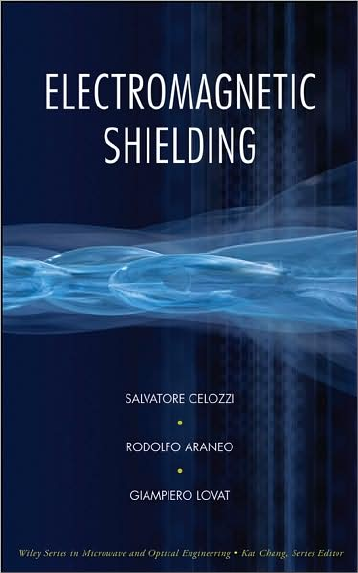
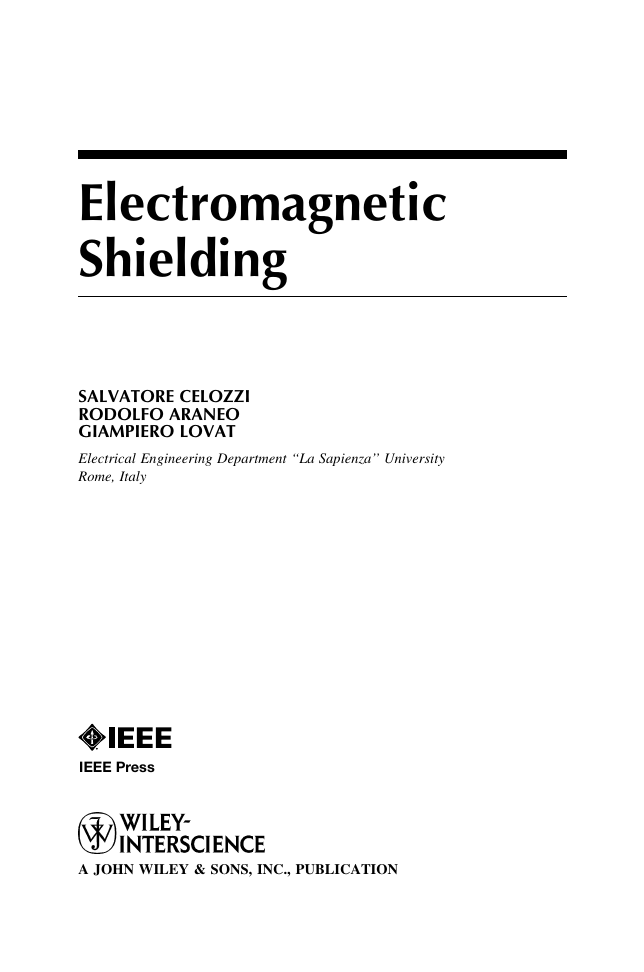

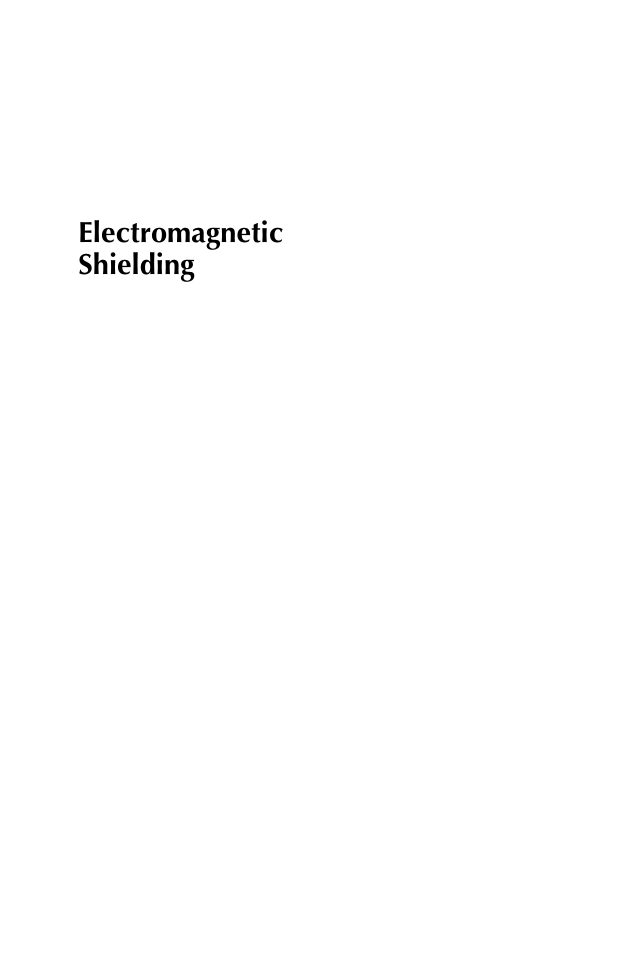
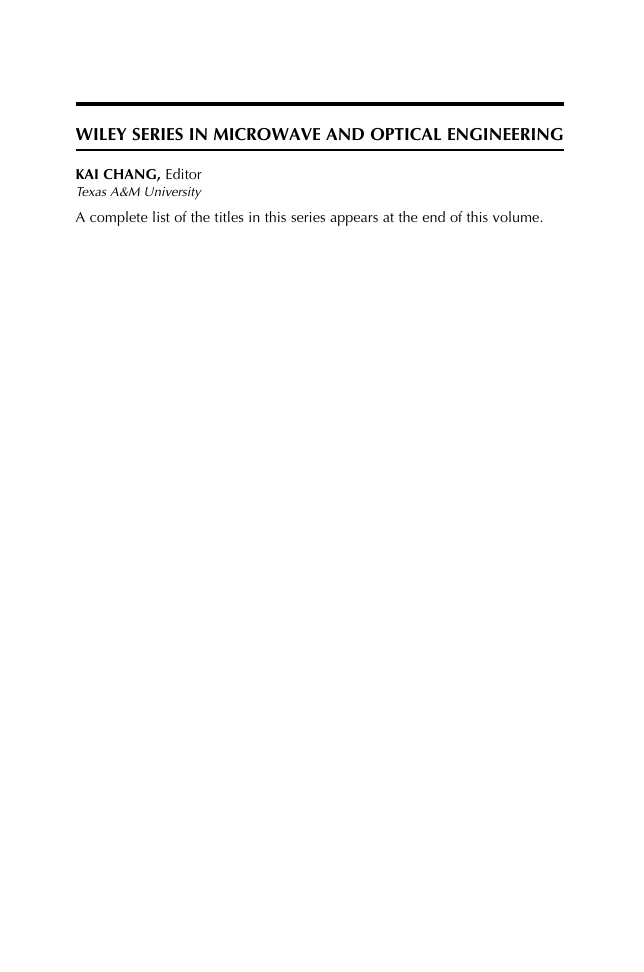
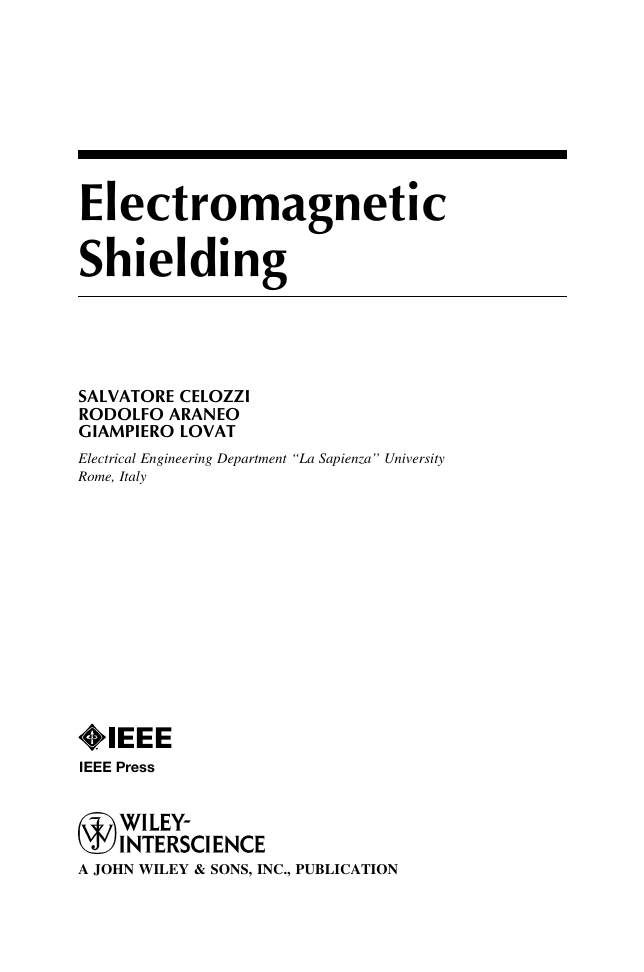
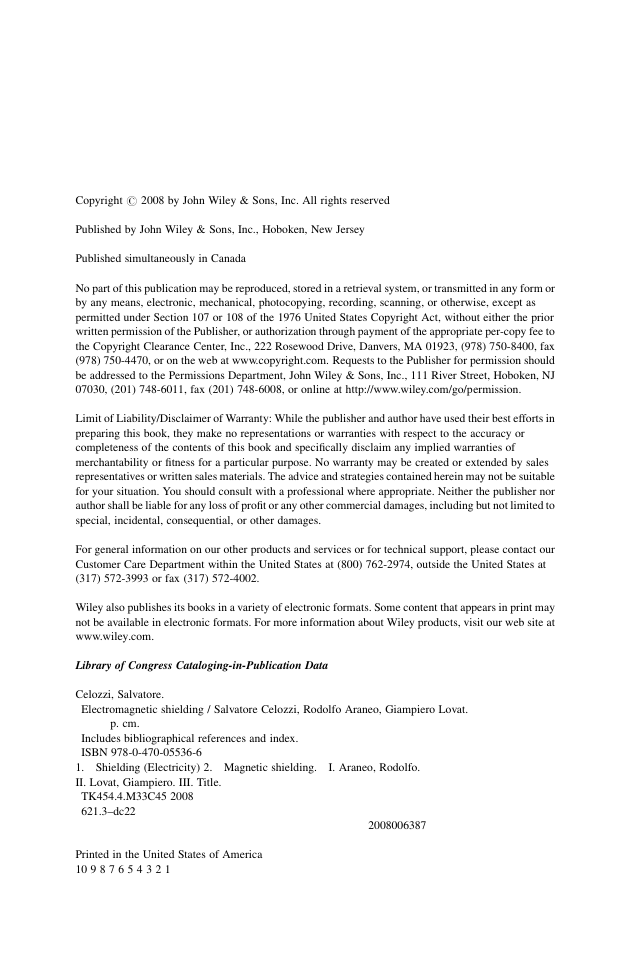
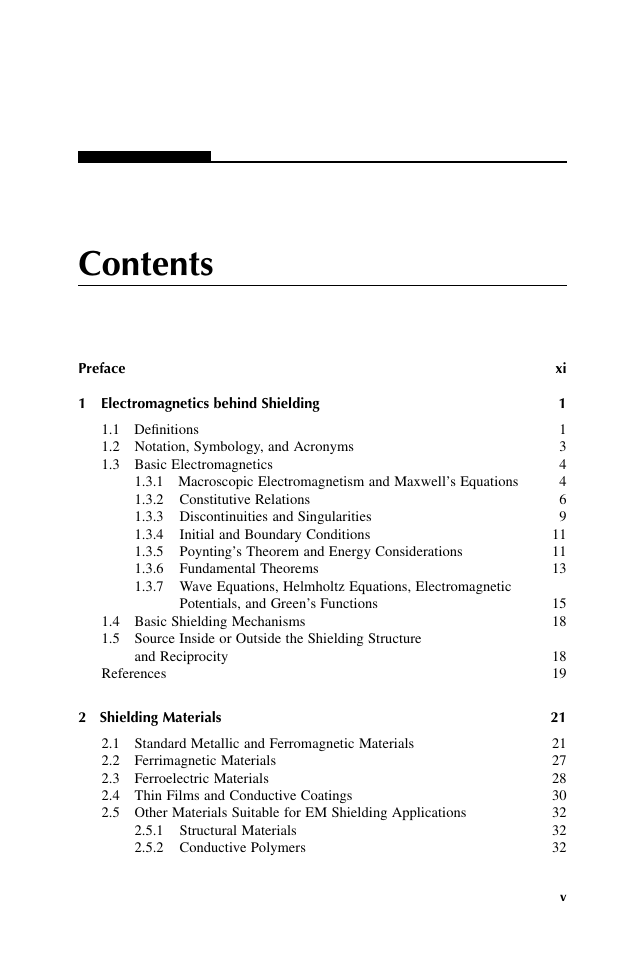








 2023年江西萍乡中考道德与法治真题及答案.doc
2023年江西萍乡中考道德与法治真题及答案.doc 2012年重庆南川中考生物真题及答案.doc
2012年重庆南川中考生物真题及答案.doc 2013年江西师范大学地理学综合及文艺理论基础考研真题.doc
2013年江西师范大学地理学综合及文艺理论基础考研真题.doc 2020年四川甘孜小升初语文真题及答案I卷.doc
2020年四川甘孜小升初语文真题及答案I卷.doc 2020年注册岩土工程师专业基础考试真题及答案.doc
2020年注册岩土工程师专业基础考试真题及答案.doc 2023-2024学年福建省厦门市九年级上学期数学月考试题及答案.doc
2023-2024学年福建省厦门市九年级上学期数学月考试题及答案.doc 2021-2022学年辽宁省沈阳市大东区九年级上学期语文期末试题及答案.doc
2021-2022学年辽宁省沈阳市大东区九年级上学期语文期末试题及答案.doc 2022-2023学年北京东城区初三第一学期物理期末试卷及答案.doc
2022-2023学年北京东城区初三第一学期物理期末试卷及答案.doc 2018上半年江西教师资格初中地理学科知识与教学能力真题及答案.doc
2018上半年江西教师资格初中地理学科知识与教学能力真题及答案.doc 2012年河北国家公务员申论考试真题及答案-省级.doc
2012年河北国家公务员申论考试真题及答案-省级.doc 2020-2021学年江苏省扬州市江都区邵樊片九年级上学期数学第一次质量检测试题及答案.doc
2020-2021学年江苏省扬州市江都区邵樊片九年级上学期数学第一次质量检测试题及答案.doc 2022下半年黑龙江教师资格证中学综合素质真题及答案.doc
2022下半年黑龙江教师资格证中学综合素质真题及答案.doc